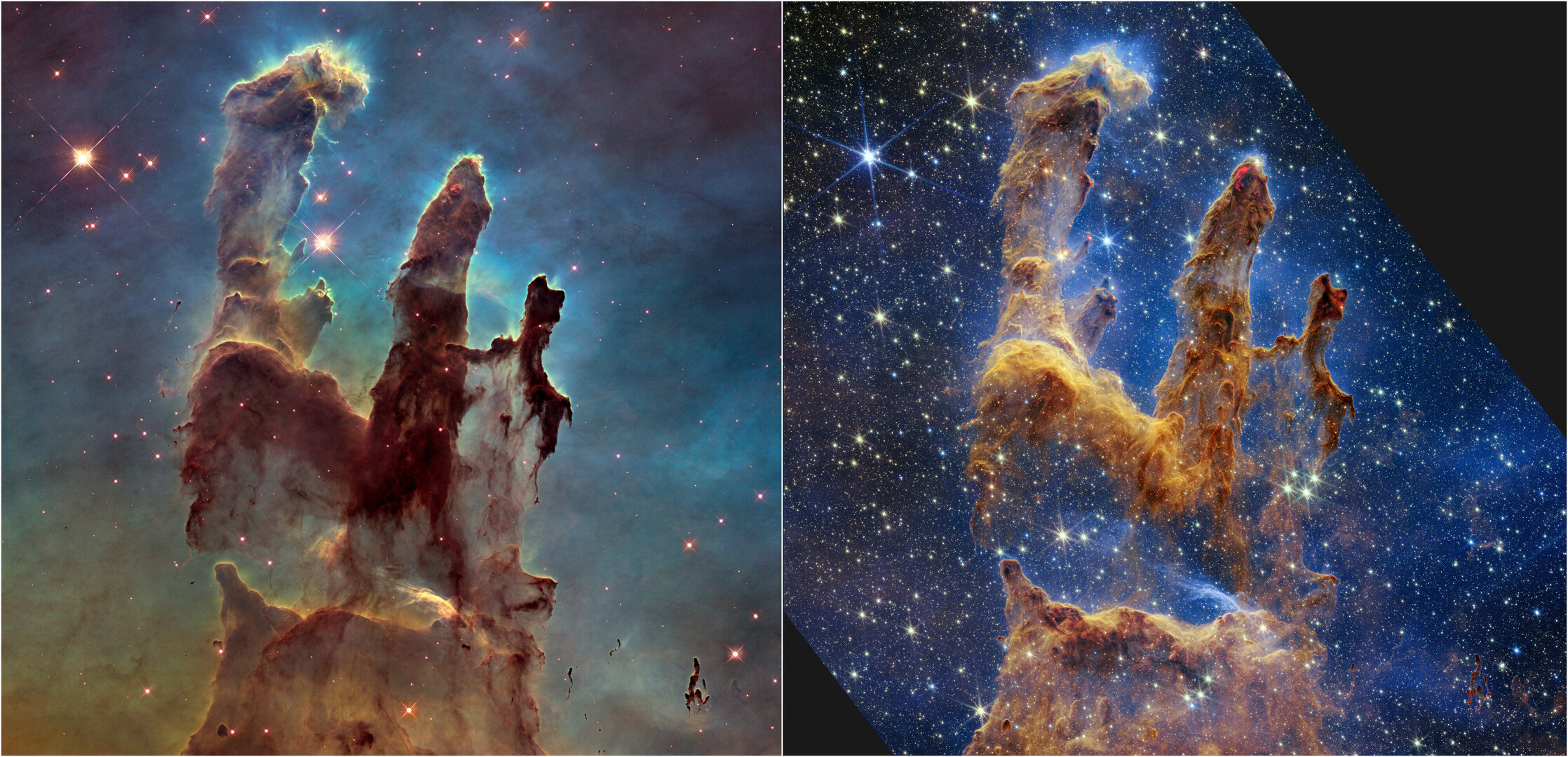Dictionary of Space Concepts
What is the Dictionary of Space Concepts?
The Dictionary of Space Concepts (DSC) is a project by UNIVERSEH – the European Space University of Earth and Humanity. Starting in 2020, this Alliance of five European Universities decided to launch an online dictionary dealing with terms and concepts related to space sciences. It should be created and used by students, lecturers, researchers and citizens alike.
After an initial planning phase, the DSC was published in spring 2022. It opens up several opportunities for all members of the UNIVERSEH Alliance and interested citizens to contribute to the content of the DSC.
In our course "Terms and Concepts of Space" (to the registration) , students learn how to write a dictionary article and later on contribute several entries to the DSC. Students and other members of the UNIVERSEH Alliance can also submit articles for the DSC via an entry in here . Interested citizens can contribute in this entry platform.
Once submitted, these articles are reviewed by UNIVERSEH Alliance staff and, if necessary, edited before their publication in the Dictionary.
In this way, the DSC is a dynamic project that is constantly expanding in content and quality through constant contributions from students, staff and citizens.
Special | A | B | C | D | E | F | G | H | I | J | K | L | M | N | O | P | Q | R | S | T | U | V | W | X | Y | Z | ALL
P |
|---|
Pillars of Creation | ||
|---|---|---|
 Short Definition The Pillars of Creation are a part of the Eagle Nebula that is located in constellation Serpens. They became popular when Hubble Telescope took first picture of them in 1995. The Pillars of Creation since then were revisited by various telescopes on multiple occasions throughout the years.
In Pillars of Creation, we can see new stars being formed. Translations of Terms/Concepts into Partner Languages
French
German
Italian
Polish
Swedish Links to Videos/Articles:
| ||
Planet | |||
|---|---|---|---|
 Source: Starkiteckt (2016, June 30). Icy Planet. flickr. https://www.flickr.com/photos/141051222@N04/27966261236 Definition:A large round celestial body orbiting around a star. EtymologyFrom the Greek word “πλανήτης” (“wanderer”). Translations:
| |||
Planet Mars | |||||||||||
|---|---|---|---|---|---|---|---|---|---|---|---|
Term/Concept: Planet Mars Image/Video/Audio: Image/Video/Audio Source: Short Definition:
Detailed Definition:
Etymology:
Sample Sentence(s):
Translations of Terms/Concepts into Partner Languages [Multiple fields for entering the translation of the term in each partner language, additional languages can potentially be added, e.g. Russian, Chinese, Portuguese] French:
German:
Polish:
Swedish:
Links to Videos/Articles:
| |||||||||||
Planetary geology | ||
|---|---|---|
 Short definition: Planetary geology is a science discipline that focuses on the geology of solid-surface celestial bodies, such as planets and their moons, asteroids and meteorites. It is also known as space geology, astrogeology or exogeology. Detailed definition: Planetary geology is a relatively new discipline, having appeared in the 1960s. Some topics that planetary geology is concerned with are: studying and analysing the composition of celestial bodies to better understand their origins and history; determining the properties and processes in the internal structure of astronomical objects, such as their volcanism, impact craters and fluvial processes; classifying exoplanets based on their geology and composition. Planetary geology is closely linked with the Earth’s geology, and many planetary geology studies are conducted by comparing the geology of the celestial body with the Earth’s geology. One of the main aims of these studies is trying to figure out whether other planets are capable of supporting life. Etymology: Even though the prefix -geo comes from Ancient Greek γῆ (gê, “earth”) and is mostly associated with topics related to the Earth, planetary geology is named as such for historical and convenience reasons. Sample sentence(s): Planetary geology researchers at Harvard contribute to robotic space missions to other planets. Translations:
French: Géologie planétaire German: Astrogeologie Italian: Esogeologia Polish: Geologia planetarna Swedish: Astrogeologi Links to Videos/Articles:
Byrne, P. K. (2021). Planetary Geology. In Elsevier eBooks (pp. 37–51). https://doi.org/10.1016/b978-0-08-102908-4.00125-9 TAWNIA VANDERWOOD. (2019, August 20). Meet a Planetary Geologist [Video]. YouTube. https://youtu.be/POMlppgXgM4 | ||
Point Nemo | |||
|---|---|---|---|
 Source: Midjourney (2023, May 25). AI illustration of point nemo. Midjourney. midjourney Space junkyard... Tags: space junkyard Keyword(s): Space Junkyard Probe (Last edited: Monday, 24 July 2023, 3:44 PM) Source: Todd, G. (October 2013). Mariner Space Probe. flickr. https://www.flickr.com/photos/101561334@N08/10437025414 Space junkyard... | |||
Probe | |||
|---|---|---|---|
 Source: Todd, G. (October 2013). Mariner Space Probe. flickr. https://www.flickr.com/photos/101561334@N08/10437025414 Short Definition: A probe is a smaller spacecraft meant to explore the space, but will return to a space station upon return from the exploration. Detailed Definition: A probe's role is to study other planets and moons, perform scientific observations and gather data about the universe. It's an unmanned spacecraft that can be remotely controlled and monitored during its mission. Some famous probes include Voyager, Pioneer and Galileo probes. Etymology: From latin proba - meaning "proof" Sample Sentence(s): Voyager 2 probe was launched in 1977. Translations: French: sonde German: Sonde Polish: Sonda Swedish: sond Links to Videos/Articles: https://www.nasa.gov/content/goddard/parker-solar-probe https://www.space.com/40437-parker-solar-probe.html | |||
Q |
|---|
Quasar | ||
|---|---|---|
 Creator(s): Unknown Year: (n.d.) Title of image: Artist's rendering of ULAS J1120+0641 Description of image: Artist's rendering depicting ULAS J1120+0641, a distant quasar discovered in 2011. Retrieved from URL: https://en.wikipedia.org/wiki/File:Artist%27s_rendering_ULAS_J1120%2B0641.jpg on May 29, 2023
Definitions
Sample Sentence(s) 1. In 1963, the first measurement of the distance to a quasar — a radio source that looks like a star in visible light — showed it to be an enormously powerful beacon lying billions of light years away. Author : Rober Antonucci, Year: (2013) Title of the article: Astronomy: Quasars at record distance Title of the Journal: Nature Volume : 495(7439) Page range: 165-166, Retrieved from https://www.nature.com/articles/495165a on May 29, 2023
Translations of Terms/Concepts into Partner Languages French German Italian Polish Swedish Additional Translations of Terms/Concepts into Other Lang... Russian: Квазар Links to Videos/Articles:
https://www.britannica.com/science/quasar | ||
R |
|---|
Radiation | ||
|---|---|---|
Image:  Image: Source: https://www.esa.int/Enabling_Support/Space_Engineering_Technology/Proba_Missions/Detecting_radiation Short Definition: Generation of strong and hazardous energy that results from atoms being broken up. Detailed Definition: The full process through which energy is released by one body, transported across a space or other intermediary, and then absorbed by another body. The universe is full of radiation as it is a form of energy that is emitted in the form of rays, electromagnetic waves, and/or particles, which are found all over the cosmos. Radiation may be utilized cautiously to learn more about biological and mechanical systems, despite the fact that it can also be harmful to both of these systems. Etymology: Radiation comes from the Latin radiare, which means emit rays. Sample Sentence(s): High radiation doses are administered to patients during cancer therapy. Alpha particles are an illustration of ionizing radiation. Translations of Terms/Concepts into Partner Languages French: radiation German: Strahlung Polish: promieniowanie Swedish: strålning Links to Videos/Articles: https://www.nasa.gov/feature/how-nasa-prepares-spacecraft-for-the-harsh-radiation-of-space https://www.nasa.gov/analogs/nsrl/why-space-radiation-matters | ||
Reaction control system | ||
|---|---|---|
Image Image Shepard, A., NASA. (1972, December). Apollo 14 LM RCS quads. Retrieved form https://upload.wikimedia.org/wikipedia/commons/2/2d/LM_RCS.jpg Short Definition Reaction control system (RCS) is a system of low-thrust engines that is used to control orientation of a spacecraft in space (attitude control) and for fine position and velocity adjustments. Detailed Definition The reaction control system of a spacecraft consists of multiple low-thrust engines that are placed symmetrically on the spacecraft equidistantly from its barycentre to ensure even force and torque distribution. Thrusters can provide thrust in any direction and combining thrusters in different positions allows acquiring force in any direction or torque in any plane, which enables the spacecraft to perform translational motion in any direction and any of roll, pitch and yaw rotations. RCS is used for attitude control (for example, to keep a telescope pointed at one object for a long time), precise manoeuvring (for example, while spacecraft docking), orbit correction and other purposes. Etymology Reaction – re- (back, again, anew) + action (from French réaction)Control – from Anglo-French contreroller– exert authoritySystem – from Late Latin or Greek systema– an arrangement, organized whole, a whole compounded of parts Sample Sentences The spacecraft's reaction control system precisely adjusts the orientation and stability of the vehicle during maneuvers in the microgravity environment of space. Translations in partner languages: German: Reaktionskontrollsystem (RCS) French: système de contrôle de la réaction (RCS) Swedish: seaktionskontrollsystem (RCS) Polish: system sterowania reakcyjnego (RCS) Italian: sistema di controllo della reazione (RCS) Translations in other languages: Russian: Реактивная система управления Ukrainian: Реактивна система керування References Colas, A. L., Valenzuela, J. G. (2020, August). Reaction Control System Performance Characterization using Vacuum Chamber Thrust Stand. Retrieved form https://arc.aiaa.org/doi/10.2514/6.2020-3526 Boeing. (2006, November). ISS Motion Motion Control System. Retrieved from http://forum.nasaspaceflight.com/index.php?action=dlattach;topic=34777.0;attach=586775 | ||

